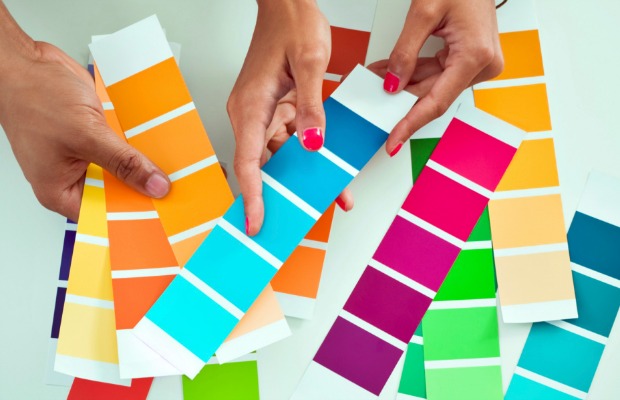How to Pick All the Right Colors for Your Home

Painting the interior of your home is an ordeal. Actual grunt work aside, choosing the right colors can be a deceptively complicated process — especially if you’re going for an immaculate result.
But with the right colors, you can achieve way more than meets the eye. Color choices can effectuate both psychological and economic advantages, upgrading your quality of life. Also, your home will just look good — and who doesn’t want that? You don’t need to have a rigorous background in color theory to make confident choices, either. Here are some guidelines to follow that will always inform better color decisions.
The Obvious: Start With Something You Like
Even if you’re completely bewildered, starting with a simple object you like — say, a favorite rug or even a photograph — is a great jumping-off point for your color scheme.
Mood Matters: Think About Color Psychology
Aside from immediate visual gratification, colors you look at are posited to have psychological effects. The relationship between colors and human perception has long fascinated human beings — Goethe wrote his “Theory of Colours” in 1810, for instance — and many researchers today continue to assert that color has an impact on behavior. A survey conducted in Britain in 2014 found that those who slept in blue rooms averaged the most rest, clocking in at around eight full hours of sleep per night.
Consult a color psychology chart to distill basic color associations. Considering these relationships can help influence what color schemes to incorporate into the various rooms in your home, according to their primary purposes. For instance, welcoming hues like peach are conducive to rooms that host guests, like parlors or dining rooms — whereas ruminative deep purple is more suited to a study or home office. For an even deeper dive into color psychology via interior colors, peep Valspar’s Color Therapy videos.
Pick Colors Proven to Boost Home Value
Believe it or not, certain hues can help you increase the value of your home. According to a recent analysis of 50,000 homes sold around the country, yellow colors in the kitchen bumped sale prices by an average of $1,360. Conversely, white tones in the kitchen dropped prices by an average of $82. In other rooms, earthier and neutral shades seemed to fare better, such as light greens and grays.
In addition to checking out the preceding report, take note of trends and common colors in your area. A wealth of vibrant colors indicates that you can take more risks; if neutrals abound, it might be wise to refrain from turning your living room neon pink.
Pay Attention to Light
A common misconception about color is that it is a fixed physical condition, rather than a combination of light and perception. Different lighting scenarios can transform the way colors look. (In my own bedroom, for instance, my reading light casts a glow on my walls that makes them appear grimy.)
Before you finalize your color scheme, test swatches of your chosen colors under the various lighting conditions in your home. Incandescent light is warmer and will enhance warm colors while toning down cool colors, while fluorescent light has the opposite effect. A comprehensive guide to testing color with light can be found here. In addition to the hue, pay attention to the way the light interacts with the finish of the paint, be it matte, hi-gloss, or something in between.
Beyond the tips above, AskVal is an indispensable resource for finding all the right colors for your home. In addition to Valspar’s aforementioned Pinterest Analyzer tool, they will deliver paint chips straight to your home for free, as well as offer complimentary color consultations. Less heavy lifting for you!
Article from: studioatgizmodo.kinja.com
By: Angela Wang